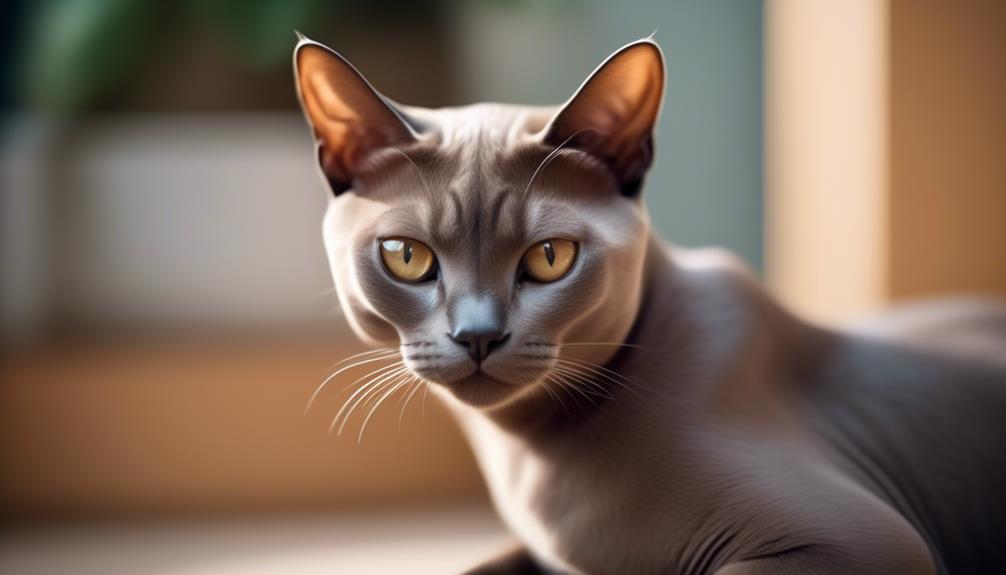
With its captivating chocolate brown coat and distinctive features, the European Burmese cat is a breed that truly stands out from the crowd.
This elegant feline, hailing from Europe, has a fascinating lineage and a rich history.
But there is much more to uncover about this breed, from its size and temperament to its grooming needs and compatibility with other pets.
So, what makes the European Burmese cat so special?
Let’s explore its unique characteristics and delve into the world of this captivating feline.
Key Takeaways
- European Burmese cats originated in Europe and have a distinct lineage from American Burmese cats.
- They are medium-sized cats, slightly larger than their American counterparts.
- European Burmese cats have luxurious plush coats in stunning chocolate brown color, but they can also come in blue, lilac, or champagne.
- They are known for their loving, playful, and intelligent temperament, often compared to dogs in terms of their personality.
Origin and Lineage
Where did the European Burmese cat breed originate from, and what’s its lineage?
The European Burmese breed originated in Europe and has a distinct lineage from the American Burmese.
It was developed through selective breeding from Southeast Asian imports.
The ancestors of the Burmese are the Siamese and the copper cat of Burma, now known as Myanmar.
The matriarch of the modern Burmese was a small, dark-brown cat named Wong Mau.
The European Burmese cat, also known as the British Burmese or traditional Burmese, has a smaller, wedge-shaped head, almond eyes, and a slimmer body than the American Burmese.
It’s important to note that all modern Burmese cats, regardless of lineage, can be traced back to Wong Mau.
See another cat breed profile.
European Shorthair Cat Breed
Size and Breed Group
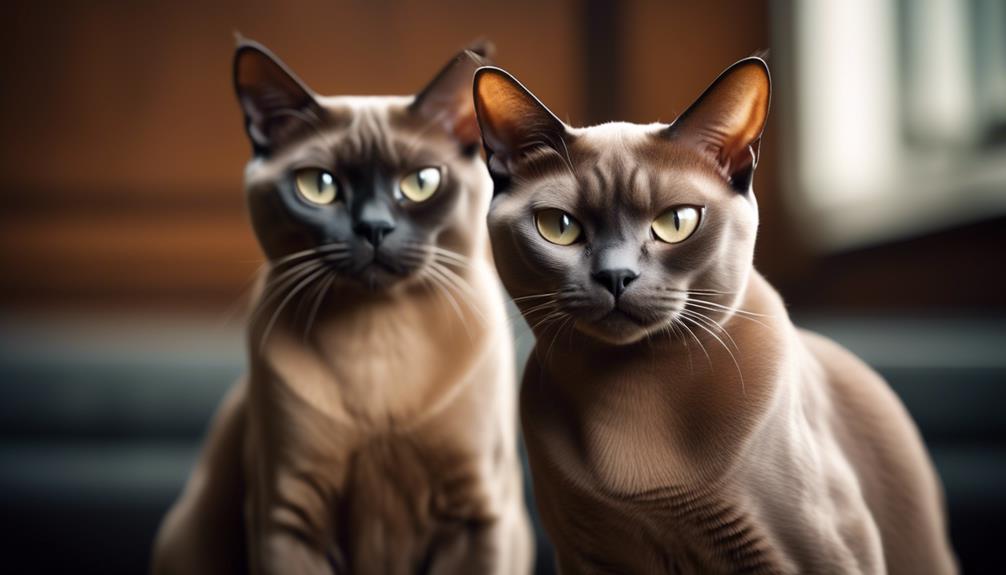
The European Burmese cat breed is classified as a medium-sized cat and belongs to the breed group of semi-longhaired domestics.
They’re slightly larger than their American counterparts, weighing 9 to 13 pounds.
Despite their size, they’re known for their sleek and slender bodies.
However, it’s important to note that major cat associations don’t recognize the European Burmese as a distinct breed group.
Their coat is short to semi-longhaired, with a luxurious plushness and a stunning chocolate brown color, although they can also come in blue, lilac, or champagne.
With their medium size and semi-longhaired coat, the European Burmese is an elegant and charming addition to any household.
Lifespan and Health
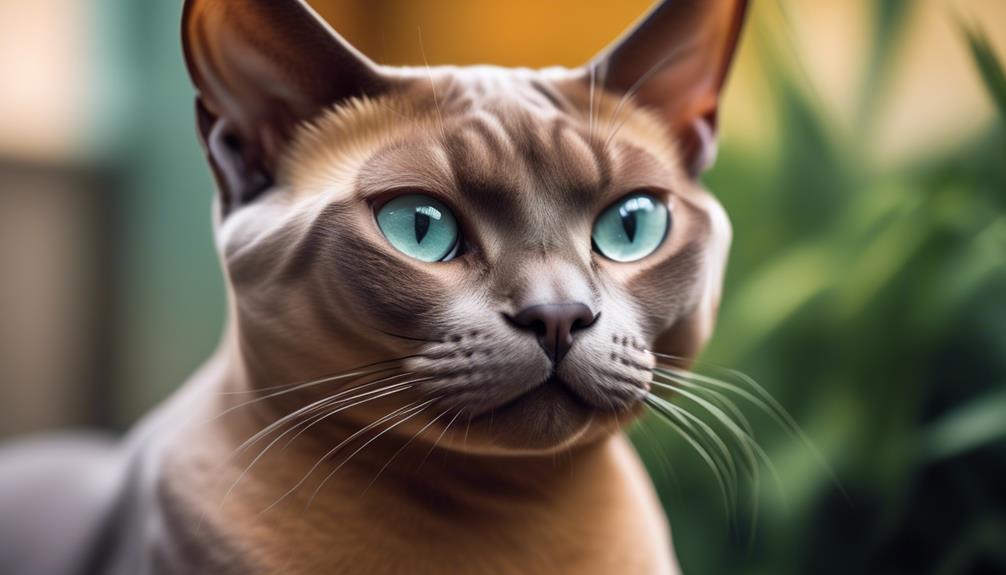
How long do European Burmese cats typically live, and what are their common health concerns?
European Burmese cats have a lifespan of 10 to 17 years. Overall, they’re generally healthy cats.
However, there are a few health concerns that can affect this breed.
One common health issue is hypertrophic cardiomyopathy (HCM), a condition that causes thickening of the heart muscles and can lead to heart failure.
Regular check-ups with a veterinarian can help monitor the cat’s heart health.
Another potential health concern is diabetes mellitus, which is characterized by high blood sugar levels.
Maintaining a healthy weight through proper diet and exercise can help prevent this condition.
European Burmese cat owners must be aware of these potential health concerns and provide the necessary care to ensure their cat’s well-being.
Coat Color and Grooming
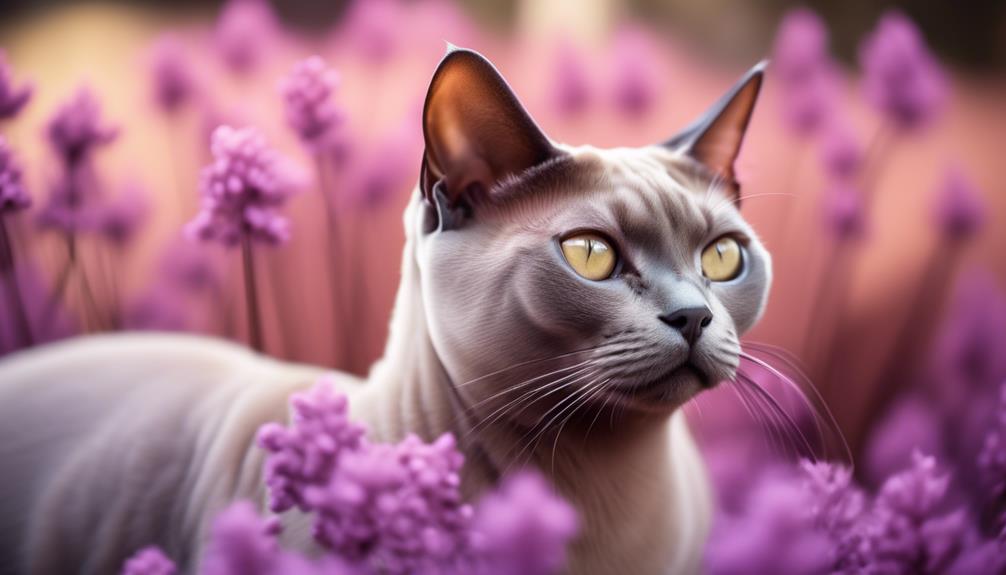
European Burmese cats come in various stunning coat colors and require regular grooming to maintain their luxurious coats.
Here are three important points to know about the coat color and grooming needs of European Burmese cats:
- Coat Colors: European Burmese cats are known for their rich chocolate brown coat color, their most common and recognized hue. However, they can also come in beautiful colors like blue, lilac, and champagne. These different coat colors add to the charm and diversity of the breed.
- Grooming Needs: European Burmese cats have short to semi-long hair that’s plush and velvety to the touch. Regular brushing is necessary to prevent matting and keep their coats in top condition. This not only helps to maintain their luxurious appearance but also promotes healthy skin and a shiny coat.
- Bonding through Grooming: Grooming sessions can be a wonderful bonding experience between the owner and the cat. European Burmese cats generally enjoy being groomed and appreciate the one-on-one attention. It’s an opportunity to create a stronger bond with your feline companion while ensuring their coat remains in optimal condition.
History and Ancestry
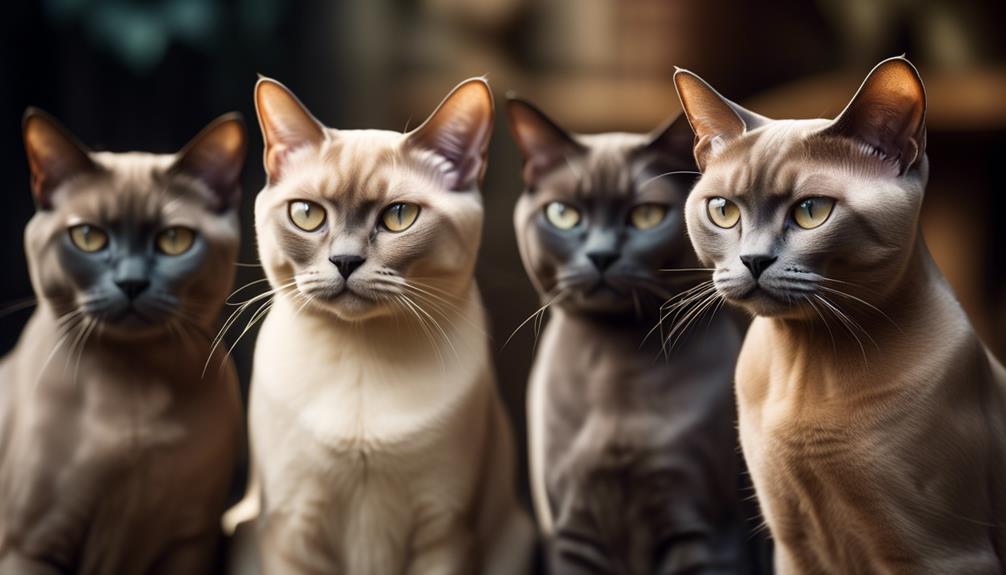
Tracing back through the lineage of the European Burmese cat breed reveals a fascinating history and ancestry.
The ancestors of the Burmese are the Siamese and the copper cat of Burma, now known as Myanmar.
The matriarch of the modern Burmese was a small, dark-brown cat named Wong Mau.
The European Burmese cat, also known as the British Burmese or traditional Burmese, has a smaller, wedge-shaped head, almond eyes, and a slimmer body than the American Burmese.
Interestingly, all modern Burmese cats, regardless of lineage, originate from the same source: Wong Mau.
This breed’s unique history and ancestry contribute to its distinctive characteristics and charm.
Choosing a European Burmese Kitten
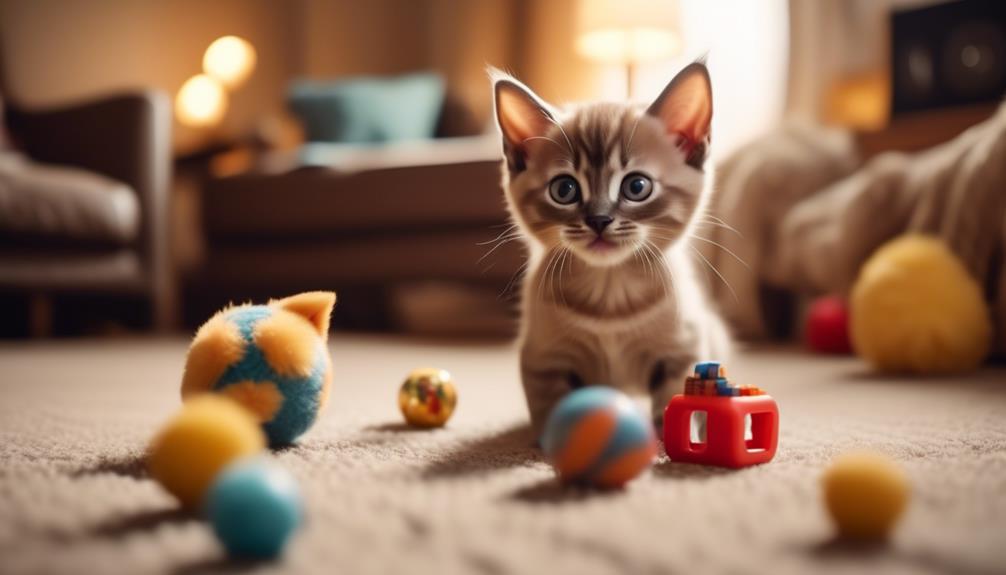
What factors should be considered when selecting a European Burmese kitten?
Here are three important considerations to keep in mind:
Adoption from rescue organizations or shelters:
- Prioritize giving a loving home to a cat in need by adopting from reputable rescue organizations or shelters.
- Doing so can provide a second chance to a European Burmese kitten and help reduce the number of cats in overcrowded shelters.
Choosing a reputable breeder:
- If you decide to purchase a European Burmese kitten, it’s crucial to choose a breeder who follows ethical practices and prioritizes the well-being of their cats.
- Reputable breeders conduct necessary health screenings, prioritize the health and temperament of their cats, and provide a nurturing environment.
Research and credibility:
- Conduct thorough research to ensure the credibility of the breeder.
- Look for reviews, visit their facility if possible, and ask for references from other satisfied customers.
- This will help ensure you get a healthy and well-socialized European Burmese kitten.
Reputable Breeders and Adoption
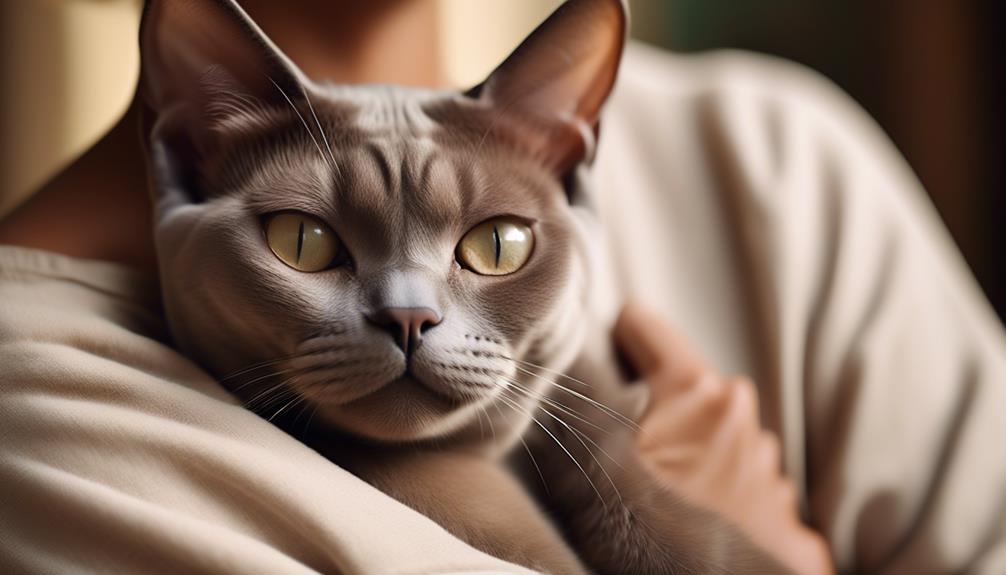
When considering the best source for a European Burmese kitten, it’s important to find reputable breeders or adoption organizations that prioritize the well-being and health of their cats.
Prioritizing adoption from rescue organizations or shelters is always a good choice, as it provides a loving home to a cat in need.
However, if purchasing from a breeder, choosing a reputable one who follows ethical practices is crucial.
Reputable breeders prioritize the health and temperament of their cats, conduct necessary health screenings, and provide a nurturing environment.
Conducting thorough research to ensure the breeder’s credibility and discourage unethical breeding practices is essential.
Temperament and Personality
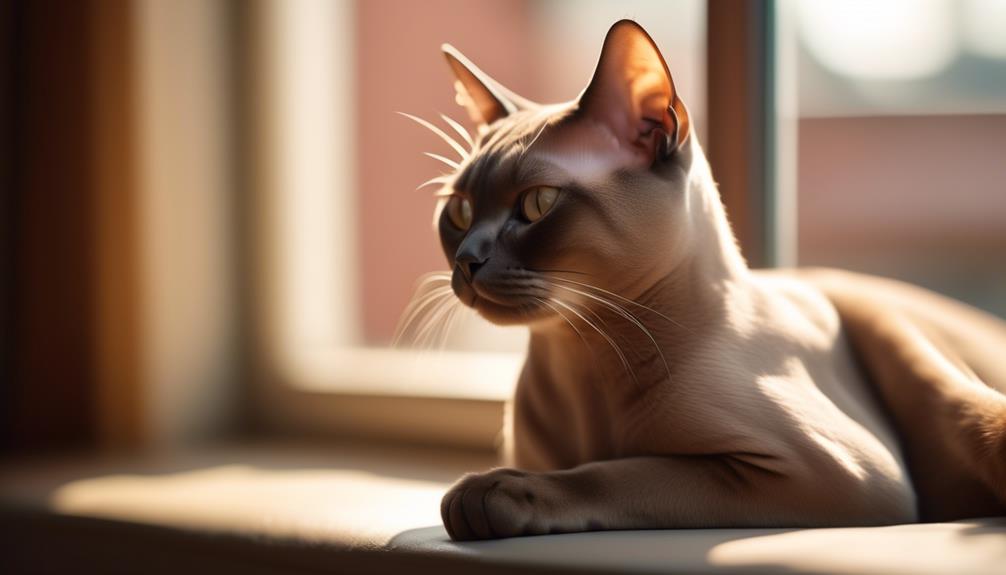
European Burmese cats are known for their loving and playful temperament.
They have a reputation for being intelligent, social, and talkative, making them a delightful addition to any household.
Here are three key characteristics that make European Burmese cats stand out:
- Dog-like personalities: European Burmese cats are often described as having personalities similar to dogs. They enjoy interacting with their human companions and are known to be loyal and affectionate.
- Playfulness: These cats are playful and love engaging in interactive playtime. They enjoy games of fetch and can even be trained to perform tricks, showcasing their intelligence and eagerness to please.
- Sociability: European Burmese cats thrive on human interaction and enjoy family participation. They get along well with children and cat-friendly dogs, making them a great choice for households with multiple pets.
With their loving and playful nature, European Burmese cats make wonderful companions for those seeking a friendly and interactive feline friend.
Exercise Needs and Training
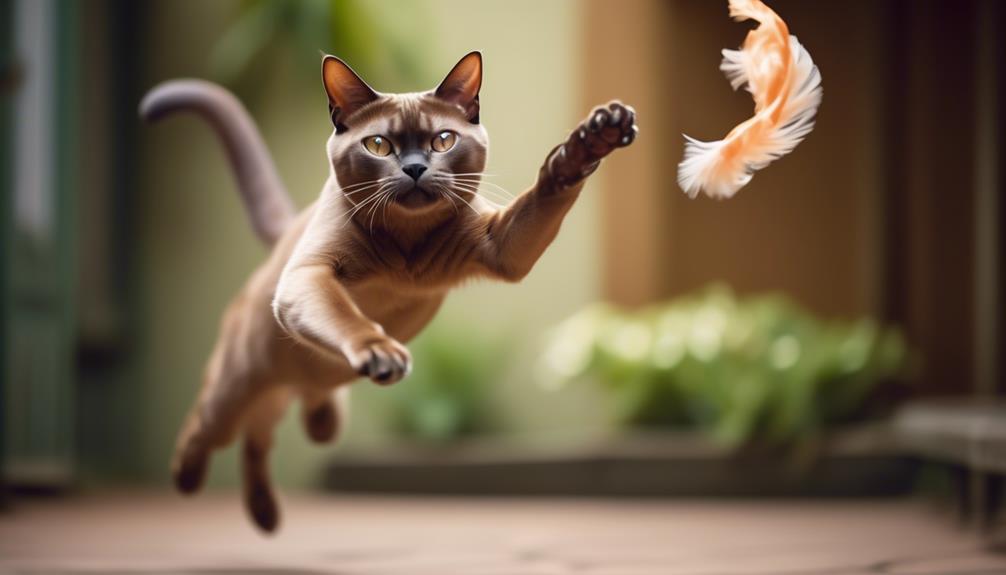
European Burmese cats have moderate exercise needs and are highly trainable due to their intelligence and desire to please.
They require daily playtime and mental stimulation to keep them happy and healthy.
These cats can learn tricks and even be trained to walk on a leash.
To give a better idea of their exercise needs and training capabilities, the following table provides a summary:
| Exercise Needs | Training Level |
|---|---|
| Moderate | Highly trainable |
The moderate exercise needs of European Burmese cats make them suitable for indoor and outdoor environments.
They enjoy interactive play sessions with their owners and engaging toys that challenge their minds.
Training sessions can be a fun way to bond with these cats, and their intelligence allows them to learn new commands and tricks quickly.
European Burmese cats can become well-behaved and obedient companions with positive reinforcement and consistency.
Grooming and Care
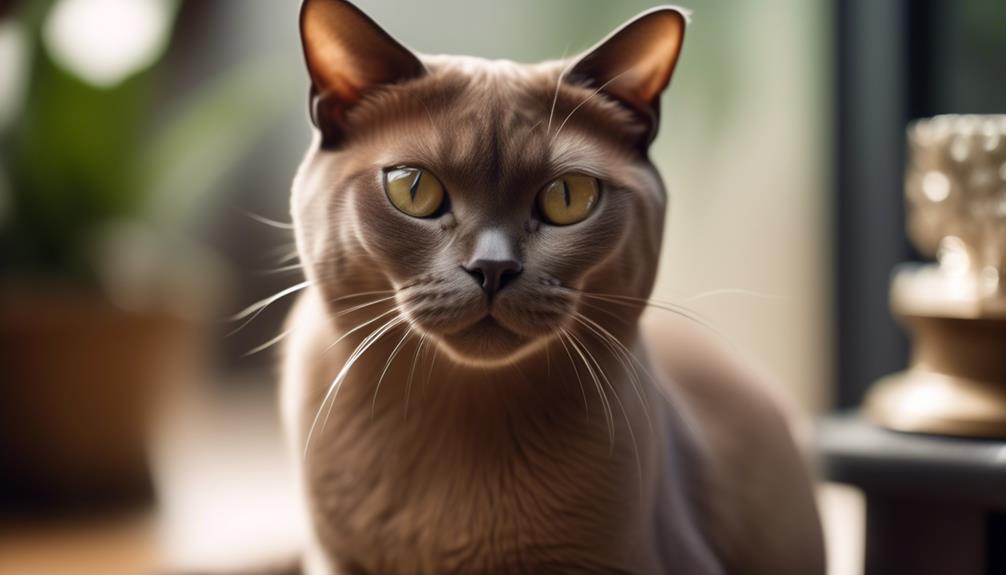
Moving on from discussing their exercise needs and training capabilities, taking care of European Burmese cats includes proper grooming to maintain their beautiful coats and overall well-being.
Here are three important aspects of grooming and care for European Burmese cats:
- Regular brushing: European Burmese cats have short to semi-long hair that can easily become matted if not properly maintained. Regular brushing helps prevent matting and keeps their coats looking healthy and shiny.
- Dental care: Like all cats, European Burmese cats can develop dental issues such as tartar buildup and gum disease. Regular dental care, including brushing their teeth and providing dental treats or toys, is essential for their oral health.
- Nail trimming: European Burmese cats have sharp claws that can cause damage to furniture and carpets if not kept in check. Regular nail trimming helps prevent accidents and keeps their paws comfortable.
Health Concerns and Screening

To ensure the well-being of European Burmese cats, it is important to be aware of their health concerns and the need for regular screening.
While European Burmese cats are generally healthy, some potential genetic health conditions can occur.
Two common health concerns in this breed are hypertrophic cardiomyopathy (HCM) and diabetes mellitus.
HCM is a heart disease that causes the walls of the heart to thicken, potentially leading to heart failure.
Diabetes mellitus is when the cat’s body cannot properly regulate blood sugar levels.
Regular screening, including heart exams and blood glucose monitoring, can help detect and manage these conditions.
It is recommended to work closely with a veterinarian knowledgeable about the breed and can provide appropriate care.
| Health Concerns | Screening | Management |
|---|---|---|
| Hypertrophic | Regular heart exams | Medication, diet, and exercise |
| Cardiomyopathy | ||
| Diabetes mellitus | Blood glucose monitoring | Insulin therapy, diet management |
European Burmese and Other Pets
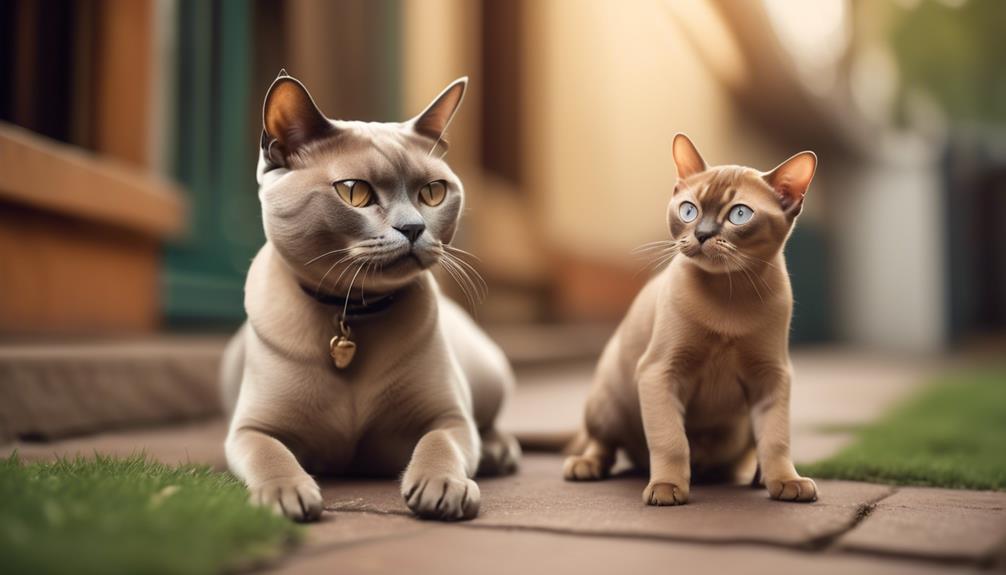
Introducing European Burmese cats to other pets can lead to harmonious relationships and enrich the lives of the cats and their furry companions.
Here are three important things to know about European Burmese and other pets:
- They enjoy playing fetch and learning tricks, making them a great choice for families with children and cat-friendly dogs.
- European Burmese cats get along well with children who treat them with respect.
- They can live peacefully with other cats and dogs who respect their authority.
To ensure a smooth introduction, it’s important to introduce pets slowly and in controlled circumstances.
This allows them to get acquainted and establish their boundaries.
European Burmese cats can form lasting bonds with their furry friends with proper introductions and mutual respect.
Family-Friendly and Playful
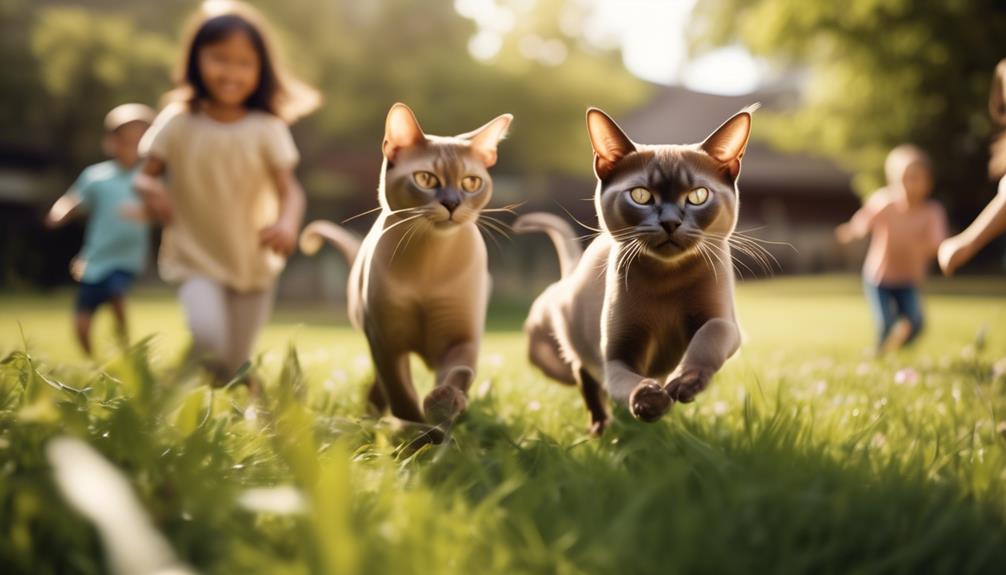
European Burmese cats are known for being family-friendly and playful. Their loving and social nature makes them great companions for families, including children.
These cats enjoy human interaction and playtime, often exhibiting dog-like personalities. They’re intelligent and highly trainable, making them a joy.
European Burmese cats also get along well with other pets, including cat-friendly dogs.
They can live peacefully with other cats and dogs as long as they’re treated with respect and their authority is acknowledged.
Their playful nature extends beyond just interacting with humans; they also enjoy playing fetch and learning tricks.
Overall, European Burmese cats are a wonderful addition to any family, bringing joy and entertainment with their playful demeanor.
Introducing European Burmese to Other Pets
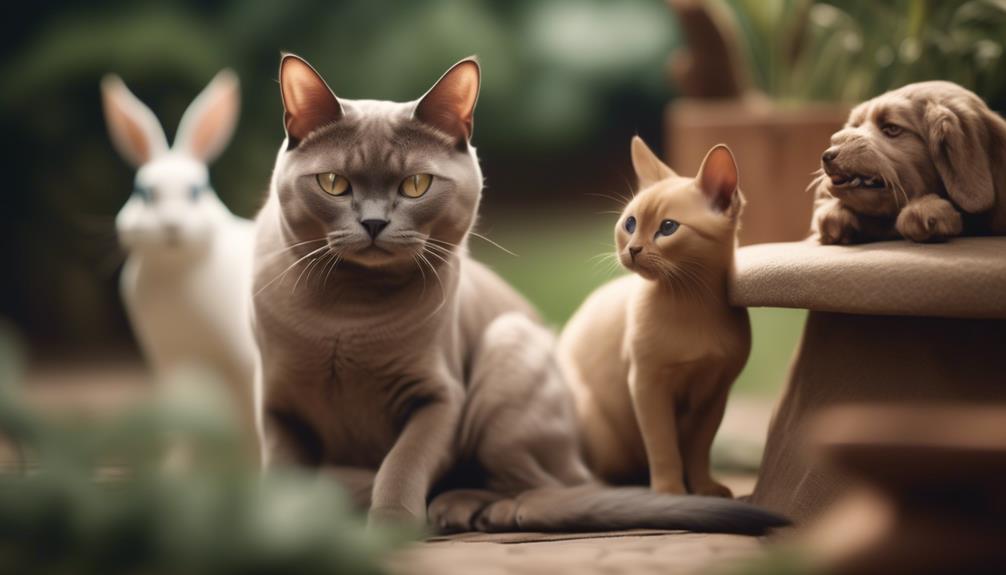
When introducing a European Burmese cat to other pets, it’s important to follow a gradual and controlled approach.
Here are three key tips to ensure a successful introduction:
- Take it slow: Let the pets get accustomed to each other’s scents by swapping bedding or using pheromone diffusers. Gradually introduce them by keeping them in separate rooms and allowing progressively supervised interactions.
- Supervise the first interactions: When the time comes for the pets to meet face-to-face, supervise their interactions closely. Provide a safe space for each pet to retreat if they feel overwhelmed or anxious.
- Positive reinforcement: Reward good behavior and calm interactions with treats and praise. This will help create positive associations and encourage harmony between the pets.
Tips for Successful Pet Integration
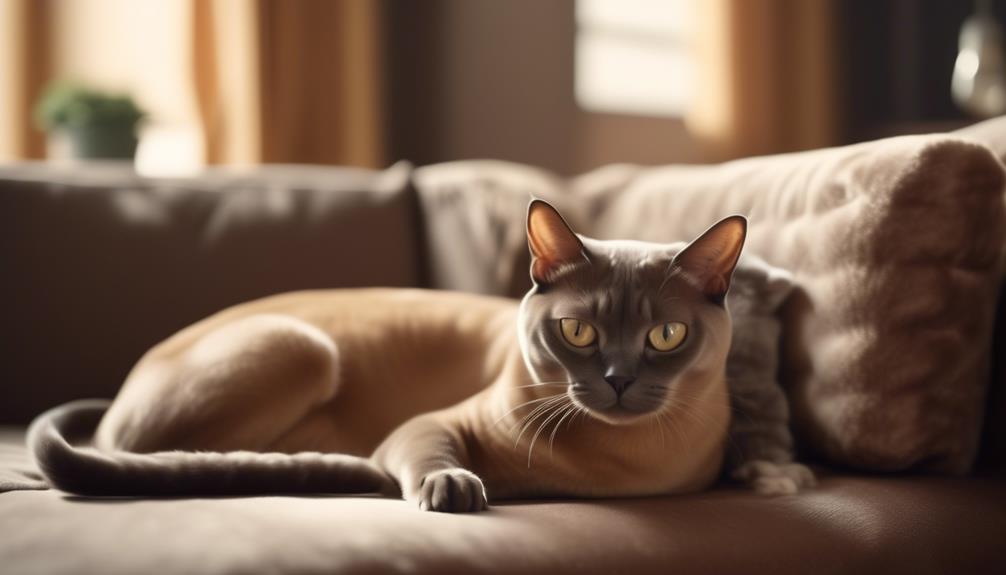
It’s important to take a gradual and controlled approach to ensure a smooth integration of pets.
Start by creating separate spaces for each pet, allowing them to become familiar with each other’s scent.
Then, begin supervised interactions in neutral territory, such as a common room or outdoor space.
Monitor their behavior closely and intervene if signs of aggression or stress arise.
Gradually increase the duration and frequency of these interactions, prioritizing the safety and comfort of all pets involved.
Provide plenty of positive reinforcement, such as treats and praise, to encourage positive associations between the pets.
They may need time to establish a harmonious relationship, so be patient and understanding throughout the integration process.
Frequently Asked Questions
Are European Burmese Cats Hypoallergenic?
No, European Burmese cats are not hypoallergenic.
They still produce allergenic proteins, such as Fel d 1, which can trigger allergic reactions in sensitive individuals.
Regular grooming and cleaning can help minimize allergens.
Can European Burmese Cats Be Left Alone for Long periods?
European Burmese cats may experience separation anxiety if left alone for long periods.
Providing them with mental stimulation, interactive toys, and a companion is recommended to prevent boredom and promote their well-being.
Do European Burmese Cats Require a Specific Diet?
European Burmese cats do not require a specific diet, but it is important to provide them with high-quality cat food that meets their nutritional needs.
Consult with a veterinarian for recommendations on feeding and dietary requirements.
Are European Burmese Cats Prone to Obesity?
European Burmese cats can be prone to obesity if not given a balanced diet and regular exercise.
Owners must monitor their cat’s weight and provide appropriate portion sizes to prevent excessive weight gain.
How Often Should European Burmese Cats Be Taken to the Veterinarian for Check-Ups?
European Burmese cats should be taken to the veterinarian for check-ups at least once a year.
Regular check-ups are important to ensure their overall health and detect potential issues early on.
Conclusion
In conclusion, the European Burmese cat is a captivating breed with a stunning chocolate brown coat and distinctive features.
They’re loving, playful, and highly intelligent, with a dog-like personality.
Their compatibility with other pets makes them a great choice for families. With regular grooming and care, their overall health is generally robust.
If you’re looking for a beautiful and affectionate companion, the European Burmese cat may be the perfect addition to your home.




